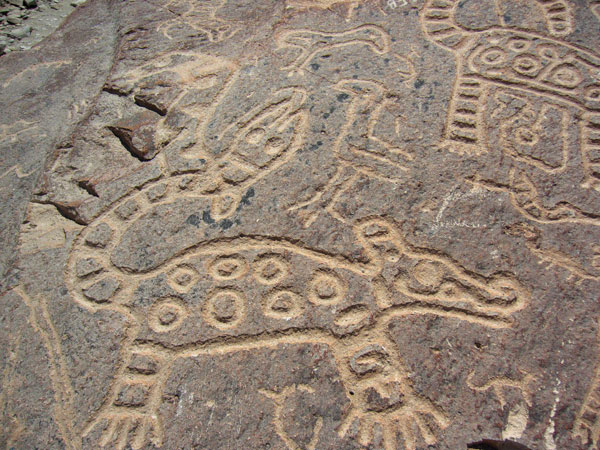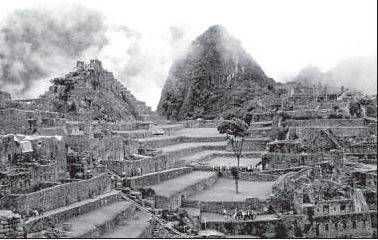Ancient Painting Discovered on Giant Rock at Machu Picchu
posted on April 21st, 2009 in Andes Mountains, Archaeology, Incas, Machu Picchu, Peru, Recent Discoveries
UCA Professor Finds Ancient Rock Painting in Peru
Arkansas Democrat-Gazette
April 17, 2009
CONWAY – A University of Central Arkansas professor said Thursday that he has discovered an ancient rock painting at an Inca burial site in the Peruvian Andes and believes the work could be anywhere from 500 to 2,000 years old.
Tens of thousands of tourists each year pass the nearly 50-foot rock at Machu Picchu, a site scientists have studied for nearly a century. But apparently no one has paid attention to the barely visible painting, said Reinaldo “Dito” Morales Jr., assistant professor of art history.
Morales is to announce his finding formally April 24 at the annual meeting of the Society for American Archaeology in Atlanta.
Morales, 45, first saw the rock art in 2000 when he was a graduate student. At the time, he said, “I figured [that] this place is so famous, surely everyone knows about it.”
The citadel of Machu Picchu, built in the 15th century, A.D.
But after he later obtained funding to return to Peru in December 2008, he began digging into the area’s art history.
“I’ve been scouring every journal, book, any kind of publication that discusses Machu Picchu or the rock art there” and haven’t found even a mention of this work, he said.
The black painting – likely done with charcoal or the mineral manganese – is partly obscured by a calcium deposit, which Morales said could take hundreds of years or longer to form. No one really knows what the painting depicts or who created it.
But when a drawing of it is su- perimposed upon a photograph Morales took, the painting appears to be “some kind of animal imagery,” said James Farmer, an associate professor and chairman of the art history department at Virginia Commonwealth University, where Morales did his doctoral dissertation.
Morales said, “I don’t know if it’s supposed to represent something or if it’s just some sort of abstract geometrical marks. That’s the question of the century for rock-art studies.”
Farmer, who has traveled to Peru since the discovery and saw the drawing, said, “Someone probably has seen this [painting in the past], but … what is significant … is that no one has ever really paid much attention to it if, in fact, they had seen it. … Apparently, [Morales is] the first modern person who certainly noticed it and brought it to the attention of anybody.
“It’s very easy to miss,” Farmer said. “Even knowing where it was, I had to go up there and look for it. It doesn’t jump out at you. It’s hard to locate, and it’s hard to see.”
Art historians already knew of engravings at Machu Picchu. But Morales said, “This is the very first painting ever documented at Machu Picchu.”
Historians believe Pachacuti, the Incas’ first emperor, built Machu Picchu as a royal winter retreat in the Andean mountains in about 1450. Morales and Farmer believe the work predates the Incas’ presence at Machu Picchu, which translates to big mountain or big peak.
Morales said he’s convinced the image is not of Incan origin “because Incan art is typically dominated by rectilinear geometric patterns, whereas this painting is primarily curvilinear.”
Farmer said the painting “stylistically looks rather similar to other rock-art traditions … that we know are much earlier.
“Just in terms of what the image appears to represent, it just doesn’t look very Inca,” he added.
“You could be talking about something that dates back to 5000 B.C.,” Farmer said. “It is stylistically similar to some other things in the Andes” from that time. But some parts of the painting are in goodenough condition that it might be just 500 years old, he said.
While it’s probably not Inca in origin, the question of “whom we would assign origin to is going to be a much more difficult question to grapple with,” Farmer said. “I think that would be sort of the first wave of research.”
Because Morales does not want to risk damaging the work, he has not even touched the painting.
“It’s not worth ruining, just for temporary satisfaction,” he said.
(Map by Maarten van Hoek)


